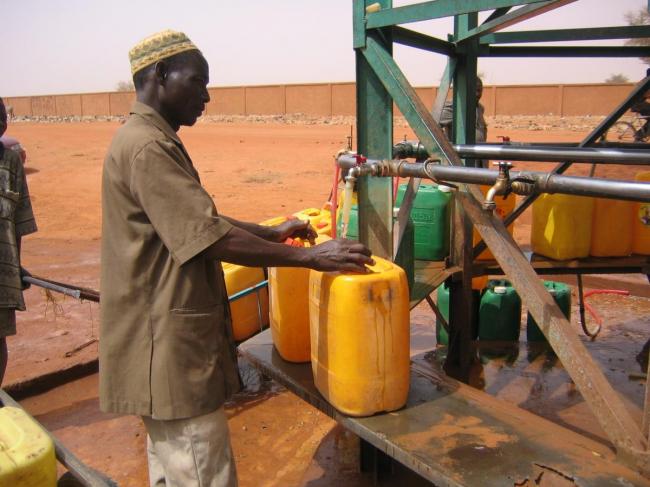Before 2021, national monitoring systems should be able to measure effectively how countries are doing in delivering water, sanitation and hygiene, IRC Burkina Faso Country director Juste Nansi states.
Published on: 05/02/2018

We fixed a time frame. The horizon of 2030. By that time, every citizen around the world should have functioning water and sanitation services within reach. That is at least what countries agreed on when they adopted the Sustainable Development Goals (SDGs).
I am convinced that by 2021 at the latest, all countries serious about the SDGs need to have strong monitoring systems in place. How else will they know what path to follow to achieve water, sanitation and hygiene services for all?
The monitoring and evaluation systems in place in many countries are not designed to respond to the challenges around the SDGs. Take Niger, where the government thought that 69.5 percent of the population had adequate water, sanitation and hygiene services. Estimates given by the Ministry of Water and Sanitation in 2016 showed, however, that the country has provided only 18% percent of the population with basic services.
This is disruptive and shocking data for officials. It means that their plans for reaching everyone are not successful. It means that the problem is more severe than they thought. Officials in Niger are reflecting on how to deal with this.
Neighbouring country Mali has problems of another kind: finding qualified staff for public institutions in the sector. The problem has already reached the Prime Minister’s level, but he does not have the answers either. Resources to recruit employees or to train people have been structurally lacking over the past decade. How can they strengthen the country’s capacities for monitoring or for engaging in SDG6 without adequate staff?
Besides, not only the WASH sector is struggling – all sectors are facing issues. So what can WASH officials do? These are just some of the problems that I encounter.
Most countries are trying and struggling. If you want real change, if you want the ambition of the SDGs to really happen, then you need to have a monitoring system that properly weights the problems, defines actions accordingly and measures progress and effectiveness. This is the challenge I work on, with IRC and partners in cooperation with UNICEF, in the nine country national monitoring initiative. In this initiative, we are supporting West-African countries to assess how they are doing, and how they can deal with country-led monitoring systems in the WASH sector. Data can be scary. It exposes problems you thought were fixed, obstacles and bottlenecks in your country’s system you had no idea of, or you have no data to illustrate a situation.
It shows that people in the city have much better access to WASH services than villagers. And it might show that, as is the case in Mali, you do not have enough trained mechanics in place to fix a tap or hand pump.
As the lead for Mali, Benin and Niger, I am looking at what systems are in place to monitor the performance of the WASH sector. Which Ministry is responsible for water? Who is in the lead for sanitation? What are the priorities and what should be done in the coming three years? Having this type of information will already be a great start that can lead to significant improvements in the country’s situation.
Keep in mind that monitoring is the backbone to achieving the SDGs. Without it, reaching the SDGs is a blind struggle. In each country where we work, we look at both the national and district level. How are they doing with country plans, sector financing, and rules and regulations? How are the service providers doing with operation and maintenance? How are district officials managing the delivery of water and sanitation services? Has staff been trained? What is the division of tasks and responsibilities? Is data collected and stored, and is there quality control?
The data also tells us something about the interventions: it shows what works and what does not, and how long that particular system has been broken. Do people in charge do enough to repair it? Finally, we assess how monitoring outputs are used. They can be used for accountability or reporting back to donors or citizens.
This methodology inspired by the health sector is really new for the WASH sector. Assessing country monitoring systems has already taught us that in many cases, rural WASH monitoring is weaker than systems in cities. Progress, it suggests, comes when performance of the sector is regularly checked.
Most countries have not properly invested in monitoring systems yet. Many municipalities have only recently got involved in the process. It means that most of the time there is no clear system in place that is coordinated. It also means we have a lot of work to do. But when there is attention for monitoring at district and national level, I am positive that there is real ambition to achieve the SDGs.
At IRC we have strong opinions and we value honest and frank discussion, so you won't be surprised to hear that not all the opinions on this site represent our official policy.